Abstract
Russia is a major grain producing country, with wheat being its largest production item. According to data for 2022, wheat production will reach 104 million tons (Mt), occupying the largest position in Russia’s total grain production. Russia exports a large portion of its production, and is a major supplier of wheat to the world market. Much of the production is consumed for food, and a certain percentage is used as animal feed, but the demand for food is by far the highest. In recent years, the effects of climate change and international trade trends have had a major impact on production and exports, and political factors such as war in particular have caused fluctuations in export volumes. Nevertheless, Russia’s grain production remains stable and it is projected to maintain its position as a major exporter for years to come.
Production(production (production volume))
Between 1992 and 2022, Russia’s grain production showed large fluctuations. Wheat production in particular has increased significantly, reaching 104 million tonnes (Mt) in 2022, the highest production volume ever. During this period, Russia increased its production through improved agricultural techniques, land reforms, and adjusting production to meet domestic and international demand. In the early 1990s, production declined due to economic difficulties following the collapse of the Soviet Union, but since the 2000s agriculture has been revitalized, and wheat production in particular has increased significantly. Especially since the second half of the 2000s, wheat production has grown rapidly due to improved agricultural production efficiency and improved climatic conditions, reaching 100% at its peak. This makes Russia one of the world’s largest wheat exporters, making agriculture a key pillar of its economy.
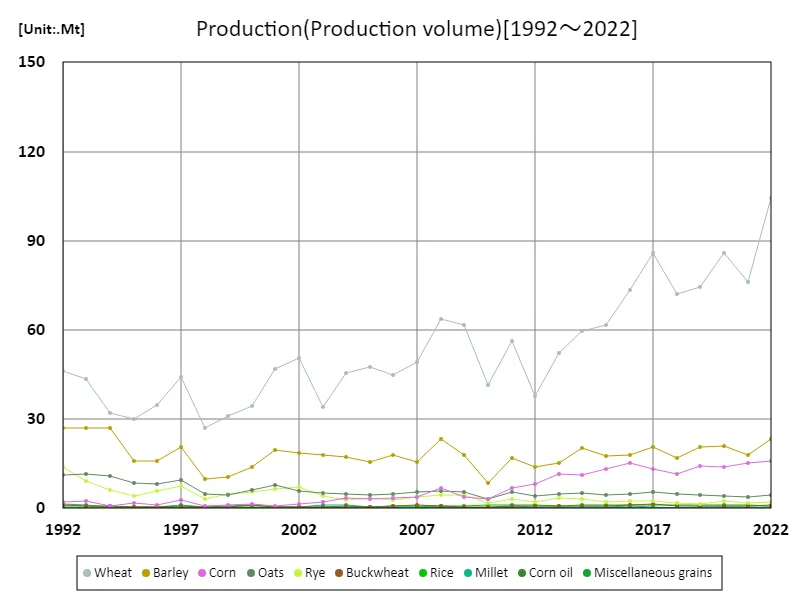

The maximum is the latest one, 104Mt of Wheat
Production (food)
Between 1992 and 2021, production of food wheat in Russia’s grain production increased significantly. In particular, 2017 was the year with the highest wheat production for food use, reaching a peak of 20.8 million tonnes (Mt). During this period, Russia focused on agricultural efficiency and innovation, increasing production to meet domestic demand. Since the second half of the 2000s, production of food wheat has stabilized, with a good balance between export and domestic consumption being secured. Although production has declined slightly from its peak, currently at 96.7%, it still represents a significant part of our food supply. With growing domestic consumption, Russia’s food wheat production also contributes to the country’s food security, adjusting to the demand of the domestic market while maintaining its status as an exporter.
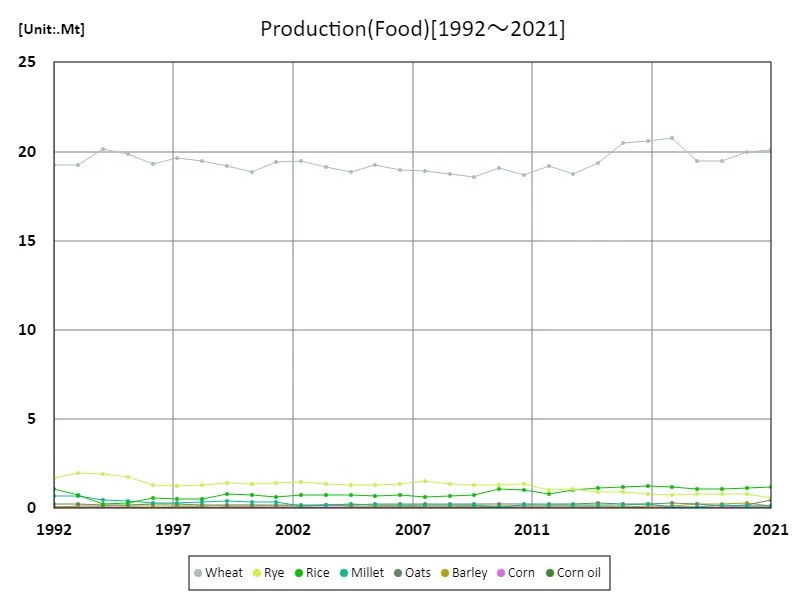

The maximum is 20.8Mt[2017] of Wheat, and the current value is about 96.7%
Import and export (exports)
Data for 1992 show that Russian grain exports totaled 55.9 million tons (Mt), of which wheat was the largest export item at 44.8 Mt. Wheat exports that year were very high, indicating its important role in Russian agricultural exports. The average export volume was relatively small at 6.98 million tonnes, with unusually high export volumes in 1992 being the exception. Russia then restructured its agricultural production, significantly increasing its wheat production and strengthening its position as an exporter. Especially since the 2000s, Russia’s wheat exports have steadily increased, establishing itself as a major supplier on the global market. Although fluctuations in export volumes are influenced by climatic conditions and international market demand, Russian grain production continues to play an important role in the world market, with wheat currently remaining a major export item.
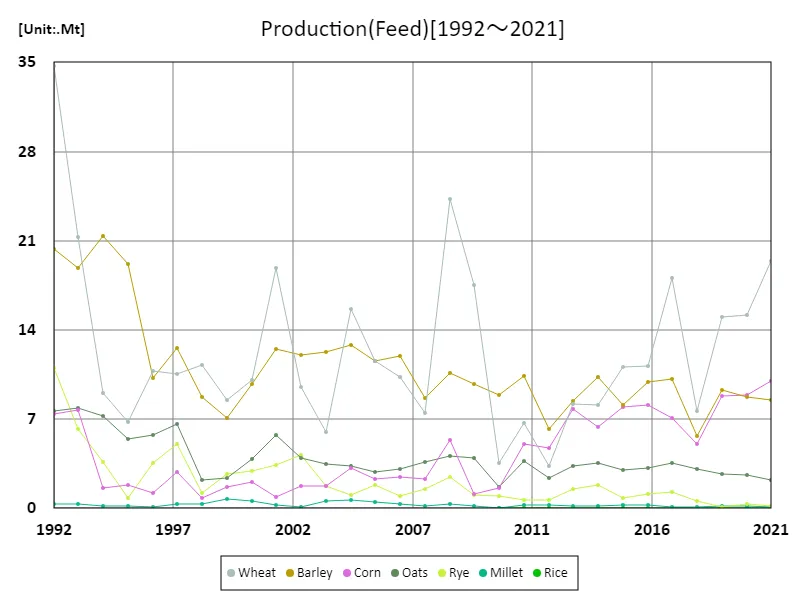

The maximum is 34.7Mt[1992] of Wheat, and the current value is about 55.9%
Animal (feed)
In 1992, the amount of grain produced for animal feed in Russia was dominated by wheat, at 34.7 million tons (Mt), which occupied an important position in Russia’s agricultural production. During this period, Russian agriculture was undergoing major upheaval with economic reforms, and the use of grain as animal feed was closely linked to the country’s livestock industry. Wheat, in particular, was widely used not only for food but also as feed, and was a basic resource for raising livestock. Although production temporarily decreased due to economic difficulties in the early 1990s, a stable supply became possible in the 2000s as demand for animal feed increased. Current wheat production for animal feed remains at the same peak level as in 1992, and demand is expected to remain stable in line with the development of the livestock industry both at home and abroad.
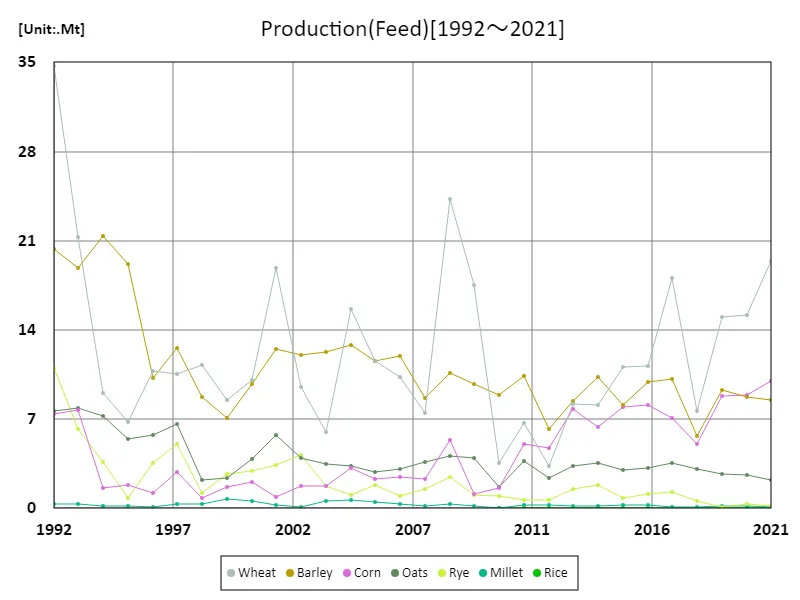

The maximum is 34.7Mt[1992] of Wheat, and the current value is about 55.9%
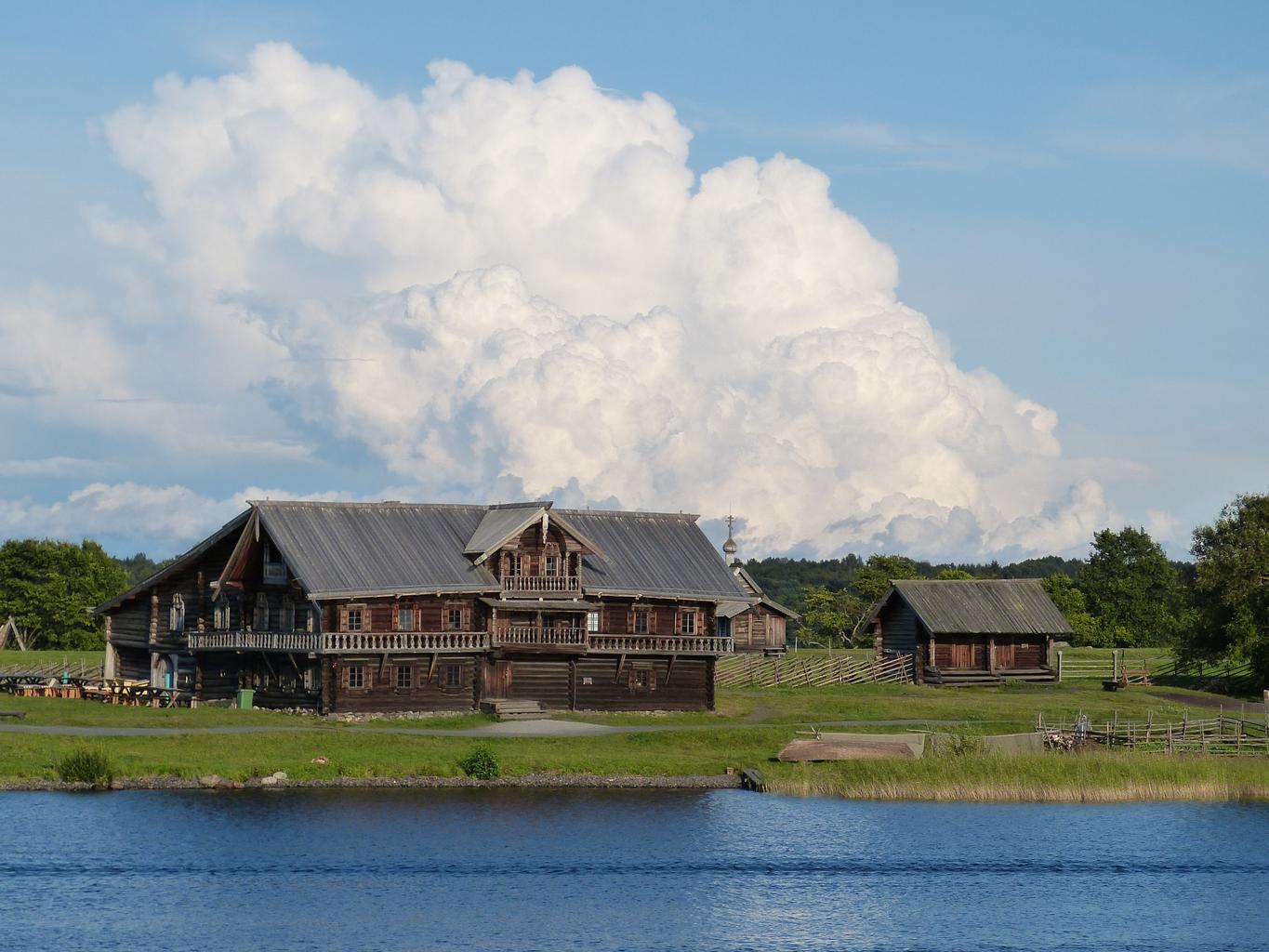


Comments